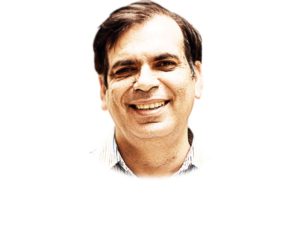 Like every year, even this year myriad management aspirants undertook the aspirational task of preparing for various management entrance exams. Like every year, the entrance exams threw a curve ball at the aspirants with varying levels of difficulty and considerable changes in the paper pattern as compared to the previous years. The MBA season starter NMAT, was a moderate paper with a few difficult and time taking questions in Logical Reasoning. Cracking NMAT demands speed and a strategy. While the most doable questions should be embraced in the first round of attempting that particular section, the other ones should be done in the remaining time. In the worst case, one must mark the answers for all the unattempted questions as there is no negative marking in NMAT.
Like every year, even this year myriad management aspirants undertook the aspirational task of preparing for various management entrance exams. Like every year, the entrance exams threw a curve ball at the aspirants with varying levels of difficulty and considerable changes in the paper pattern as compared to the previous years. The MBA season starter NMAT, was a moderate paper with a few difficult and time taking questions in Logical Reasoning. Cracking NMAT demands speed and a strategy. While the most doable questions should be embraced in the first round of attempting that particular section, the other ones should be done in the remaining time. In the worst case, one must mark the answers for all the unattempted questions as there is no negative marking in NMAT.
IIFT, which was held in November was, unlike its reputation, a moderate paper as well. The Quantitative Aptitude and Data Interpretation sections were clubbed together and so were the English Usage and Reading Comprehension sections. In all, out of the five sections, the Quant & Data Interpretation section had the highest weightage.
Following it up in the next week was CAT on 29th November 2015. The latest avatar of CAT was a 3 hour paper, with three sections with a time limit of 1 hour per section. An online calculator was another inclusion in the format of the exam. Easy questions in the VRC and QA sections brought reliefto the yearning aspirants amidst the challenging DILR section. Over a year, CAT has transformed from being a difficult exam to an even more logical and easy exam. CAT 2015 was undoubtedly an easy exam, which, in some sense, was a surprise that is now almost becoming a norm. CAT 2016 aspirants must expect a paper which encourages higher order of logical thinking. This does not make the paper easy or difficult but makes it a fair playing ground for engineers and non-engineers alike.
The SNAP exam turned it the other way round.Based on the last ten years papers, this year’s exam was probably the toughest of all. The questions were time consuming and required some computational effort. What might turn up in SNAP this year is unpredictable as its level of difficulty has been erratic in nature.
The XAT exam maintained its reputation of being a good challenge for those who had prepared well for it. A pleasant change in the format was the negative marking for the un-attempted questions. Only 13 un-attempted questions were allowed after which for each un-attempted question there was negative marking. XAT comprises the Decision Making section which is a unique feature of this exam. This section requires the student to think practically by letting go of their biases and personal interests. Having a look at the previous year XAT papers, one can make out that XAT looks for answers that uphold ethics and best business practices. Keeping this in mind, aspirants can score extremely well in this section.
In retrospect, it can be said that, barring a few exceptions, MBA entrance exams are moving towards more logical questions which are low on calculation and high on concepts. This yearaspirants should focus on solidifying their concepts and practicing questions that emphasize on these concepts.
